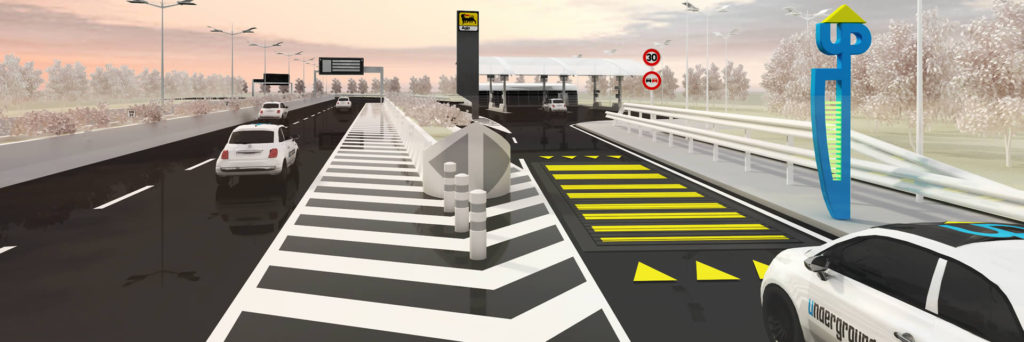LYBRA: the speed bump which generates energy

La start-up milanese Underground Power ha ideato LYBRA, un dissuasore stradale capace di trasformare l'energia di frenata delle automobili in elettricità. Credits: upgen.it
Hours and hours stuck in the traffic: this is part of your everyday’s life. But have you ever thought it could be useful to produce energy? There are a lot of technologies employed to reuse the energy generated from the movement of vehicles on the street. The Italian start-up from Milan, Underground Power, founded in 2011, had a new idea which brought to the birth of LYBRA.
LYBRA are road bumps, settled near road crossings or intersections in order to limit the speed of the vehicles. The idea is quite simple: the braking energy of tires is used to produce electricity.
How is LYBRA made?
LYBRA is made of steel, covered by a layer of second hand tires. The structure is modular and a different number of modules can be assembled, taking into consideration the energy needs. Each module is 1 meter long, 3 meters large with a thickness of 10 cm. It is usually set some centimeters underground, in order to reduce the danger for safety.

The process is the same used in the regenerative braking, employed in electric vehicles or trains. The only difference is that in this technology the energy isn’t stored in the vehicle but out of it.
The electricity produced is used for the lighting of the streets or for the recharging stations for EV. There is the possibility to sell energy to the grid, using an inverter. According to the company’s previsions, 10 m of LYBRA, settled in a street trafficated on average, could produce the energy needed by 40 houses. moreover, 15 m of LYBRA produce the same energy as 600 mq of 80 kW PV plant. The advantages are many: for example, the maintenance cost is minimum as well as the size needed for the installation.
The experimental phase started in 2013 in the city of Concorezzo and in the parking area of the Auchan shopping center of Rescaldina, near Milan. The latter installation produced 100 MWh per year, thanks to the passage of almost 8000 vehicles. This production’s result is close to the ones of the other widespread renewable sources.

“This technology can decelerate vehicles, increasing the road safety, – states Andrea Pirisi, CEO of the Underground Power – but it can also recover energy that would be wasted, drawing to one new renewable source ”.
The future employment of LYBRA, such as toll gates or trafficated roads, could increase the sustainability of the city’s mobility.
